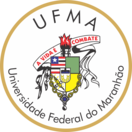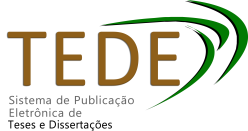| Compartilhamento |


|
Use este identificador para citar ou linkar para este item:
https://tedebc.ufma.br/jspui/handle/tede/6279Registro completo de metadados
| Campo DC | Valor | Idioma |
|---|---|---|
| dc.creator | SILVA, Diego de Brito | - |
| dc.creator.Lattes | http://lattes.cnpq.br/7301712370029349 | por |
| dc.contributor.advisor1 | DINIZ, Eduardo Moraes | - |
| dc.contributor.advisor1Lattes | http://lattes.cnpq.br/6228162885454555 | por |
| dc.contributor.referee1 | DINIZ, Eduardo Moraes | - |
| dc.contributor.referee1Lattes | http://lattes.cnpq.br/6228162885454555 | por |
| dc.contributor.referee2 | ROCHA, Helianane Oliveira | - |
| dc.contributor.referee2Lattes | http://lattes.cnpq.br/2876508705942971 | por |
| dc.contributor.referee3 | MOREIRA, Edvan | - |
| dc.contributor.referee3Lattes | http://lattes.cnpq.br/9406912742121871 | por |
| dc.date.accessioned | 2025-06-24T11:44:44Z | - |
| dc.date.issued | 2025-05-09 | - |
| dc.identifier.citation | SILVA, Diego de Brito. Modelagem de ligações químicas através do oscilador harmônico simples para alunos do 2º ano do ensino médio. 2025. 135 f. Dissertação( Programa de Pós-graduação em Rede - Ensino de Física em Rede Nacional/CCET) - Universidade Federal do Maranhão, São Luís, 2025. | por |
| dc.identifier.uri | https://tedebc.ufma.br/jspui/handle/tede/6279 | - |
| dc.description.resumo | As oscilações são fenômenos presentes na natureza, manifestando-se em uma vasta gama de situações. Elas podem ser observadas em sistemas físicos, biológicos e químicos, desempenhando um papel crucial em muitos processos naturais e tecnológicos. Na educação básica o assunto oscilações é frequentemente apresentado apenas no contexto de sistemas massa-mola e pêndulo simples. Embora esses exemplos sejam fundamentais para introduzir os conceitos básicos de movimento harmônico, eles representam apenas uma fração das oscilações que ocorrem na natureza. No entanto, as oscilações podem ser ensinadas com outros exemplos, como oscilações moleculares, possibilitando aulas mais interessantes e atrativas. Utilizando o programa Avogadro, os estudantes podem montar modelos moleculares e visualizar as energias de vibrações e as distâncias dos átomos dessas moléculas. O programa permite a simulação e análise das oscilações em diferentes moléculas, proporcionando uma compreensão visual e interativa dos fenômenos moleculares. Utilizou-se ainda o programa Desmos para ajuste de curvas (da energia e da distância dos átomos na molécula) para determinar a constante de mola k das moléculas estudadas e aprofundar o assunto ocilações. Isso não só reforça o entendimento dos conceitos teóricos, mas também introduz ferramentas de análise e visualização de dados, que são habilidades valiosas em várias áreas científicas. Para tanto, este trabalho teve como finalidade desenvolver um manual para aplicar esses estudos das oscilações moleculares (usando o Avogadro e o Desmos) aos alunos do segundo ano do Ensino Médio. O mesmo visa fornecer um guia passo a passo para professores e alunos, facilitando a integração dessas ferramentas digitais nas aulas de ondulatória e promovendo um aprendizado mais dinâmico e envolvente. O produto educacional teve como resultado um manual sobre estudos de vibrações moleculares utilizando os programas Avogadro e Desmos fundamentado na teoria da aprendizagem significativa de David Ausubel, possibilitando uma prática pedagógica mais dinâmica junto aos alunos. Ao abordar o estudo das oscilações moleculares em sala de aula, mostramos aos alunos que esse fenômeno pode acontecer também em escalas muito menores, comparadas ao mundo macroscópico. Com isso, busca-se promover uma aprendizagem mais profunda e contextualizada, facilitando a compreensão dos fenômenos científicos de forma mais abrangente. | por |
| dc.description.abstract | Oscillations are phenomena present in nature, manifesting in a wide range of situations. They can be observed in physical, biological, and chemical systems, playing a crucial role in many natural and technological processes. In basic education, the topic of oscillations is often presented only in the context of mass-spring systems and simple pendulums. While these examples are fundamental for introducing the basic concepts of harmonic motion, they represent only a fraction of the oscillations that occur in nature. However, oscillations can be taught using other examples, such as molecular oscillations, making classes more interesting and engaging. Using the Avogadro software, students can build molecular models and visualize the vibrational energies and the distances between atoms in these molecules. The program allows for the simulation and analysis of oscillations in different molecules, providing a visual and interactive understanding of molecular phenomena. The Desmos software was also used for curve fitting ( of energy and atomic distance in the molecule) to determine the spring constant 𝑘 of the studied molecules and to deepen the topic of oscillations. This not only reinforces the understanding of theoretical concepts but also introduces data analysis and visualization tools, which are valuable skills in various scientific fields. To this end, the purpose of this work was to develop a manual for applying these studies of molecular oscillations (using Avogadro and Desmos) for second-year high school students. It aims to provide a stepby-step guide for teachers and students, facilitating the integration of these digital tools into waverelated lessons and promoting more dynamic and engaging learning. The educational product resulted in a manual on molecular vibration studies using the Avogadro and Desmos programs, based on David Ausubel’s theory of meaningful learning, enabling a more dynamic pedagogical practice with students. By addressing the study of molecular oscillations in the classroom, we show students that this phenomenon can also occur on much smaller scales compared to the macroscopic world. In doing so, we aim to promote deeper and more contextualized learning, facilitating a more comprehensive understanding of scientific phenomena. | eng |
| dc.description.provenance | Submitted by Maria Aparecida (cidazen@gmail.com) on 2025-06-24T11:44:44Z No. of bitstreams: 1 DIEGO DE BRITO SILVA.pdf: 5220178 bytes, checksum: 46b844f8489ac5af6846049242d56762 (MD5) | eng |
| dc.description.provenance | Made available in DSpace on 2025-06-24T11:44:44Z (GMT). No. of bitstreams: 1 DIEGO DE BRITO SILVA.pdf: 5220178 bytes, checksum: 46b844f8489ac5af6846049242d56762 (MD5) Previous issue date: 2025-05-09 | eng |
| dc.description.sponsorship | CAPES | por |
| dc.format | application/pdf | * |
| dc.language | por | por |
| dc.publisher | Universidade Federal do Maranhão | por |
| dc.publisher.department | DEPARTAMENTO DE FÍSICA/CCET | por |
| dc.publisher.country | Brasil | por |
| dc.publisher.initials | UFMA | por |
| dc.publisher.program | PROGRAMA DE PÓS-GRADUAÇÃO EM REDE - ENSINO DE FÍSICA EM REDE NACIONAL/CCET | por |
| dc.rights | Acesso Aberto | por |
| dc.subject | Oscilador harmônico simples; | por |
| dc.subject | Oscilações moleculares; | por |
| dc.subject | Aprendizagem significativa; | por |
| dc.subject | Avogadro; | por |
| dc.subject | Desmos | por |
| dc.subject | Simple harmonic oscillator; | eng |
| dc.subject | Molecular oscillations; | eng |
| dc.subject | Meaningful learning; | eng |
| dc.subject | Avogadro; | eng |
| dc.subject | Desmos | eng |
| dc.subject.cnpq | Ensino-Aprendizagem | por |
| dc.title | MODELAGEM DE LIGAÇÕES QUÍMICAS ATRAVÉS DO OSCILADOR HARMÔNICO SIMPLES PARA ALUNOS DO 2º ANO DO ENSINO MÉDIO | por |
| dc.title.alternative | MODELING CHEMICAL BONDING USING THE HARMONIC OSCILLATOR SIMPLE FOR 2ND YEAR HIGH SCHOOL STUDENTS | eng |
| dc.type | Dissertação | por |
| Aparece nas coleções: | DISSERTAÇÃO DE MESTRADO - PROGRAMA DE MESTRADO PROFISSIONAL NACIONAL EM ENSINO DE FÍSICA | |
Arquivos associados a este item:
| Arquivo | Descrição | Tamanho | Formato | |
|---|---|---|---|---|
| DIEGO DE BRITO SILVA.pdf | Dissertação de Mestrado | 5,1 MB | Adobe PDF | Baixar/Abrir Pré-Visualizar |
Os itens no repositório estão protegidos por copyright, com todos os direitos reservados, salvo quando é indicado o contrário.




